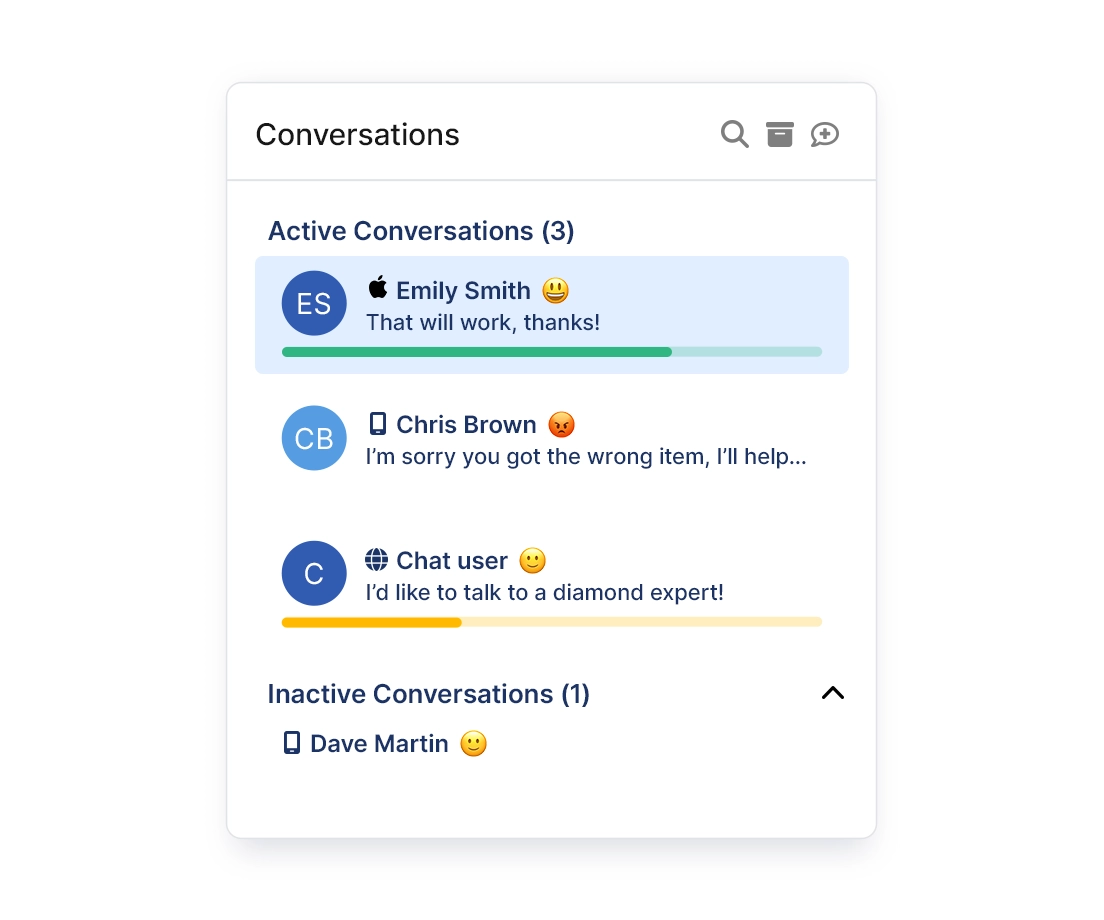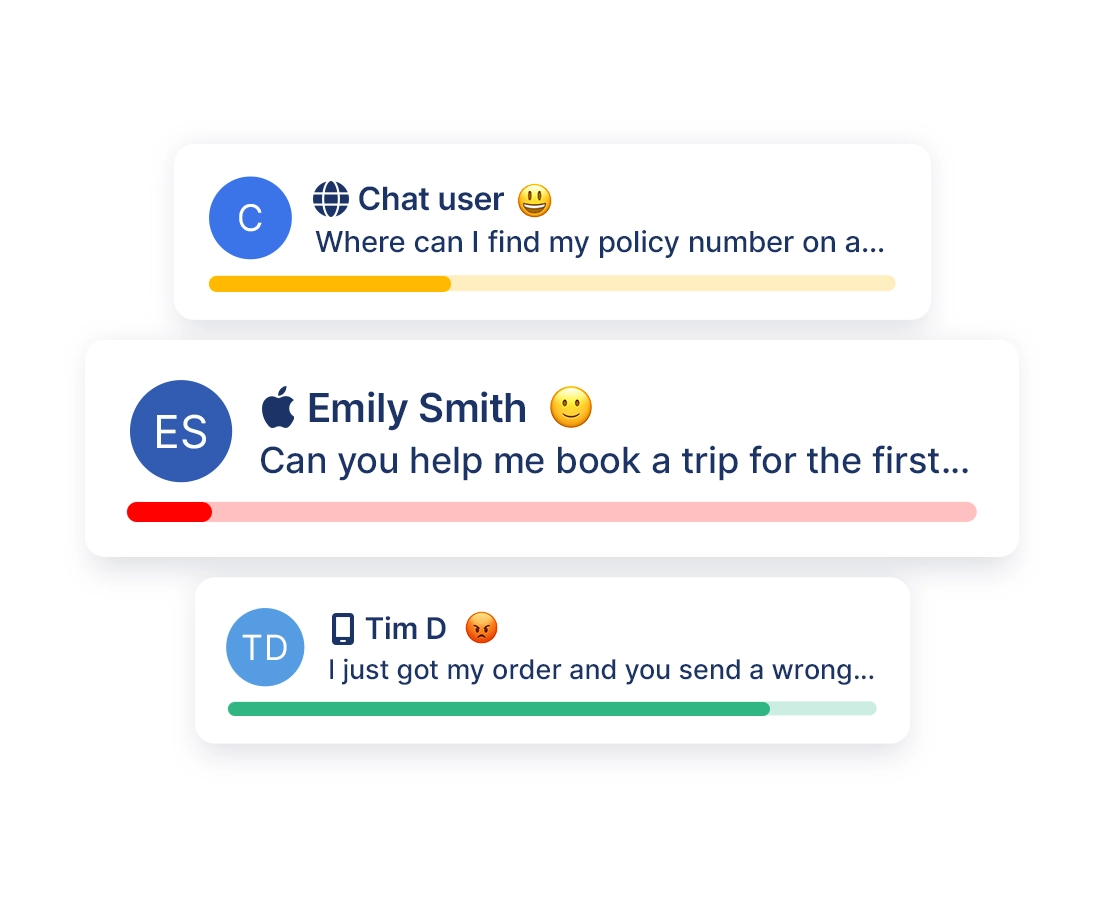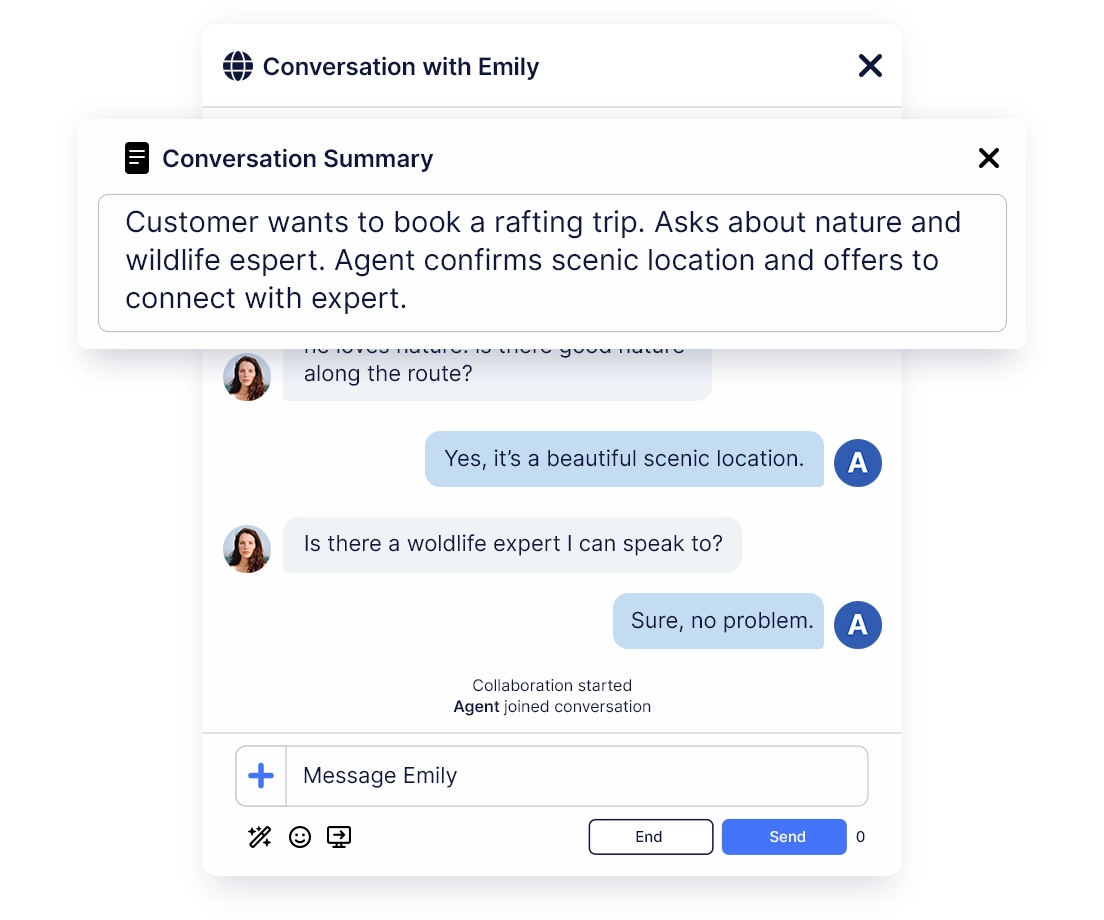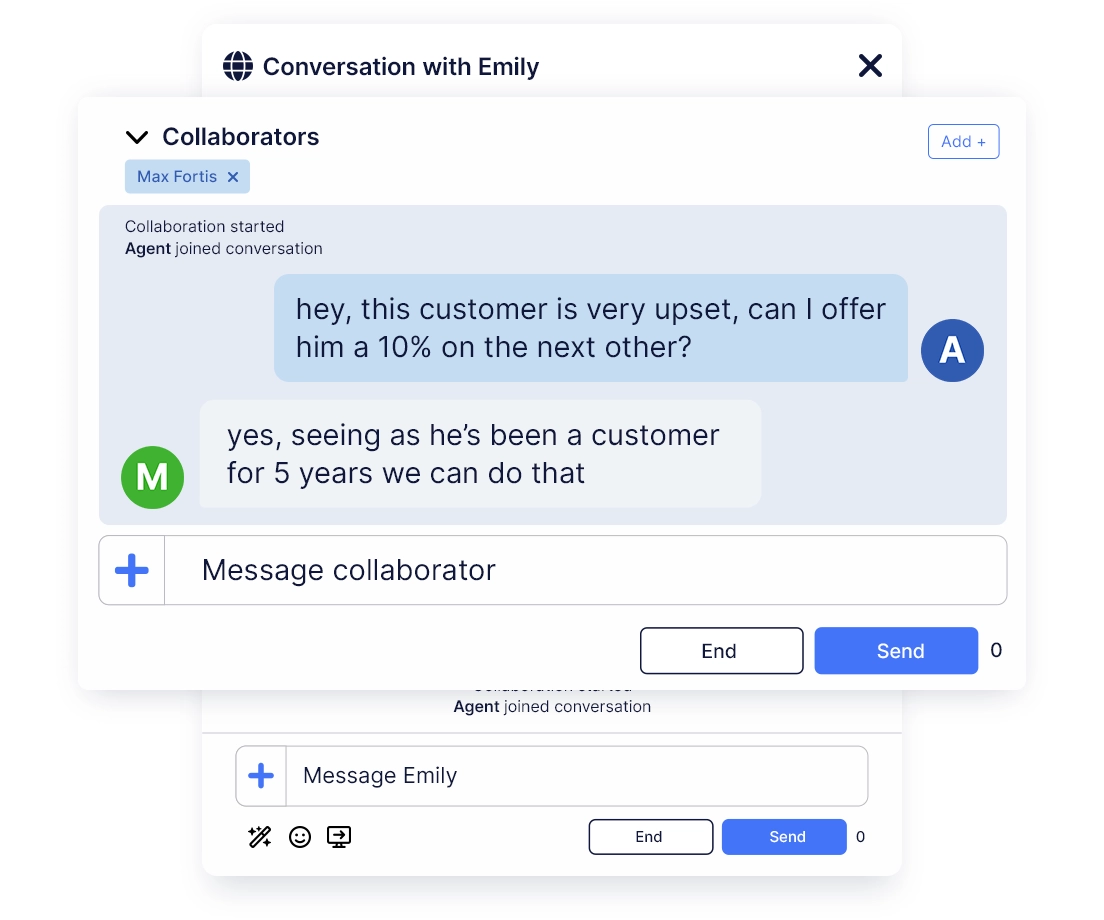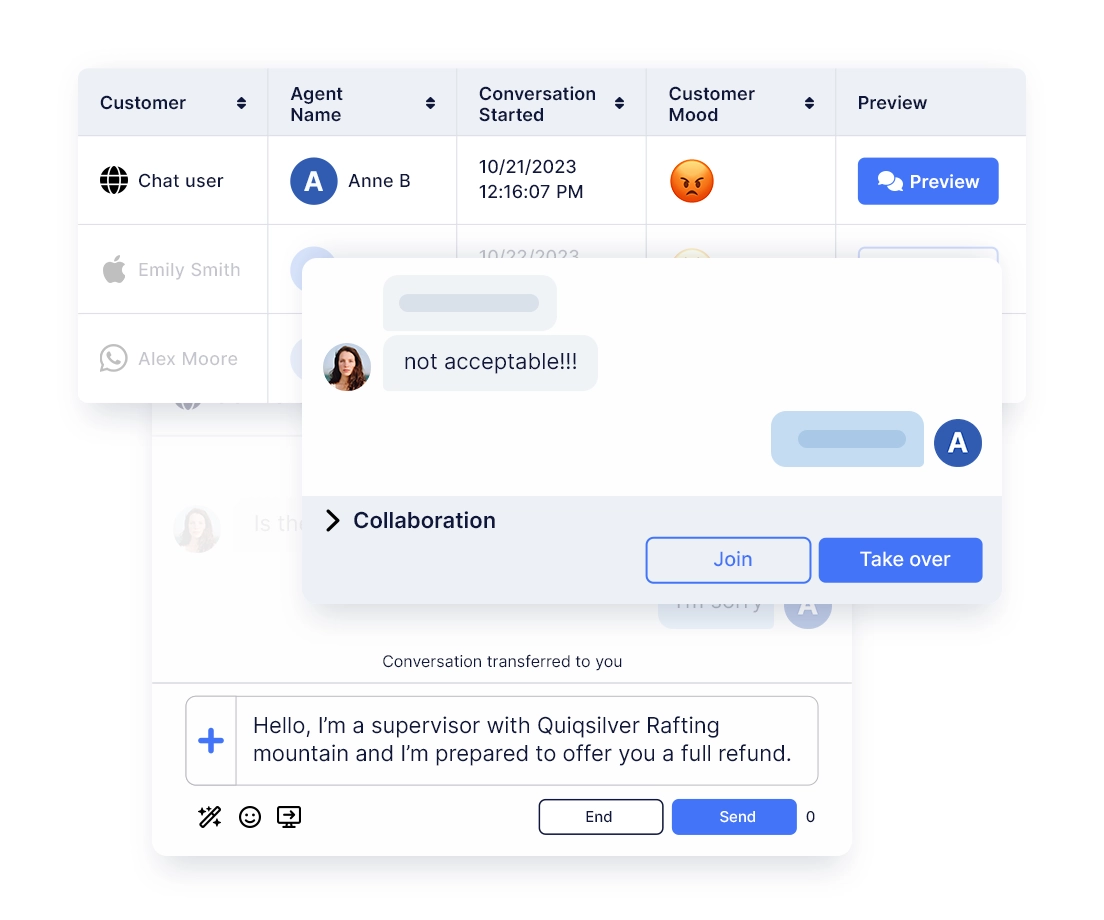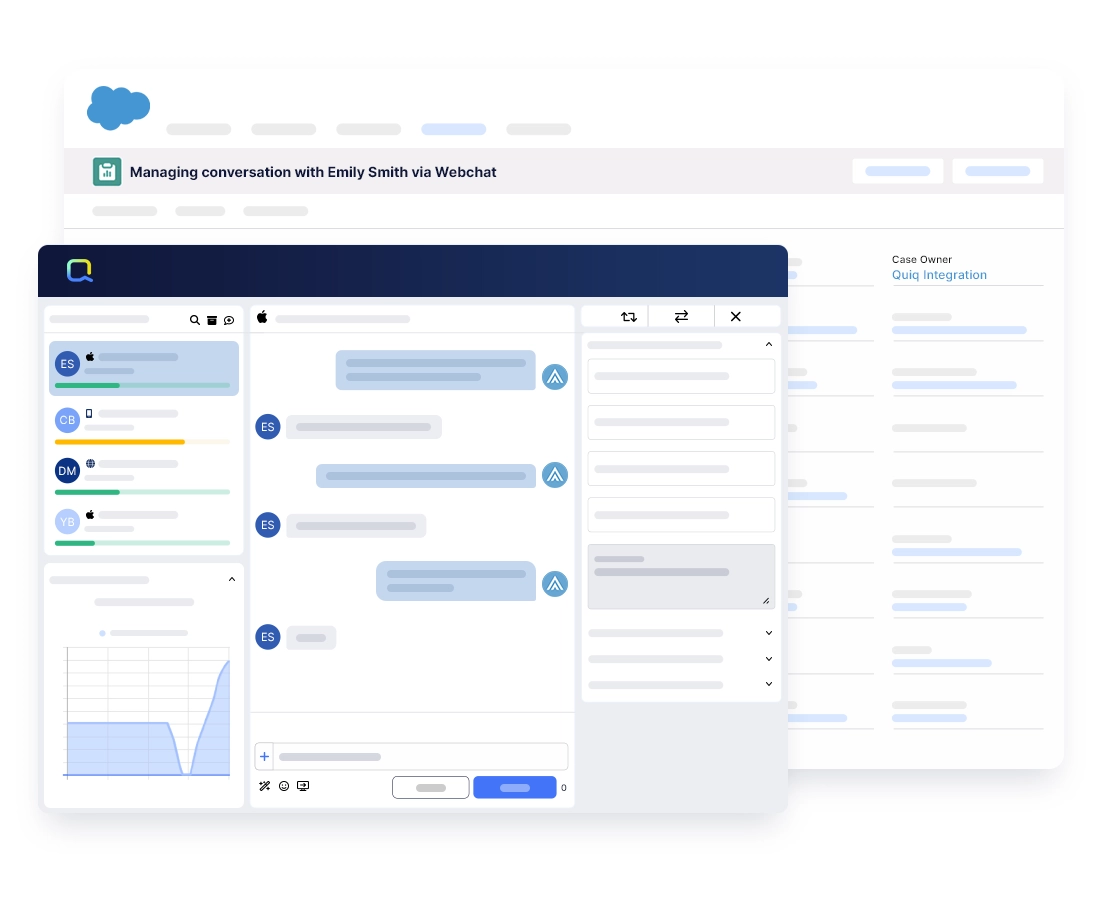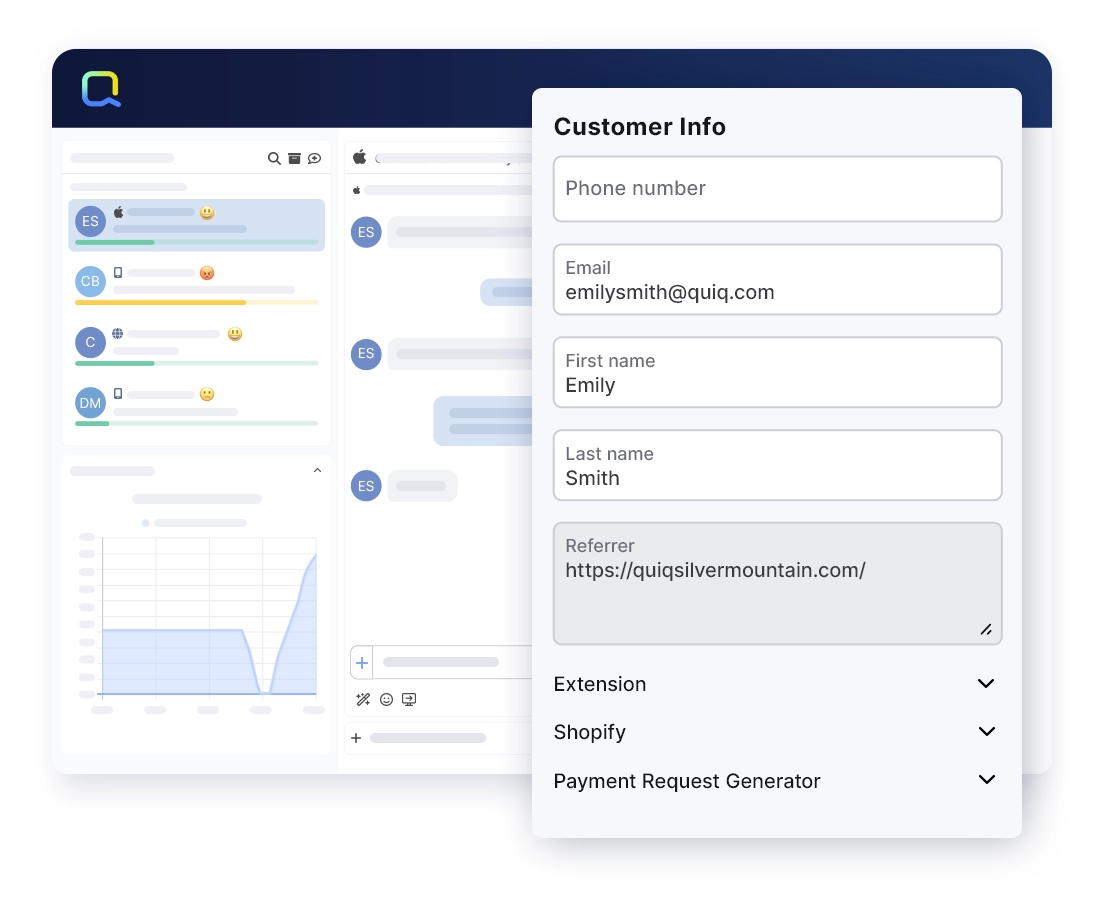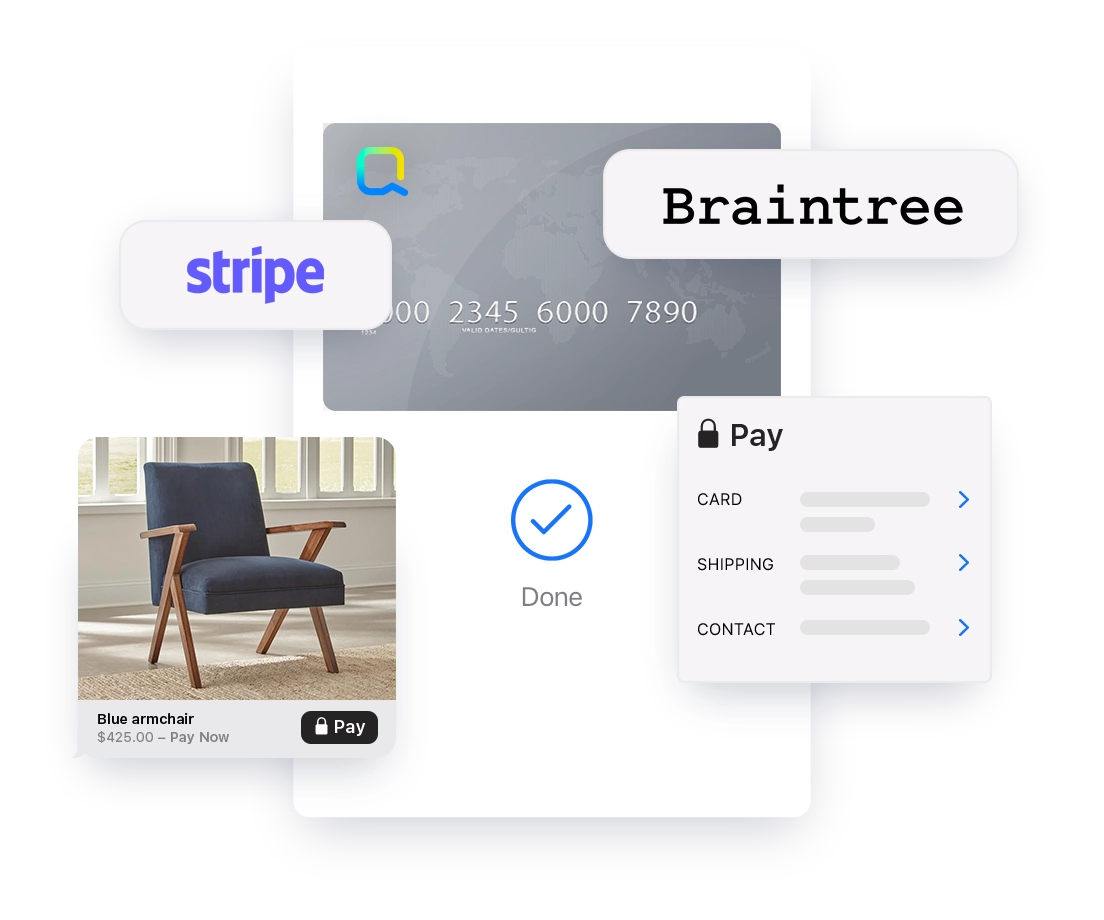Digital Engagement Center
All your asynchronous channels in one
AI-powered workspace.

Trusted by leading CX-obsessed brands.
Built for every messaging channel.
Designed for human agents and managers.
Quiq’s Digital Engagement Center brings web chat, SMS and all your digital channels into a single AI-powered human agent workspace. With all the features and capabilities you expect in a contact center, but purpose-built for asynchronous messaging.
Robust agent response tools.
AI assistants for human agents.
Meet your agents’ trusted co-pilot. AI assistants join your human agents for every customer interaction, providing real-time coaching, as well as recommendations and responses based on the context provided and existing information with your CX stack (knowledge base, case history, CRM, etc.). They can also take action on behalf of a human agent, like automating a return submission, to accelerate time to resolution. Learn more.
Quiq Compose
Turn quick, informal drafts into polished, empathetic responses. Powered by AI and kept on-brand with guardrails, it turns human agent input into polished messages, enabling faster, higher-quality communications.
Message Catalog
In Quiq, your human agents can leverage predefined responses, along with engaging rich messaging features like carousel cards, payments, authentication, and much more.
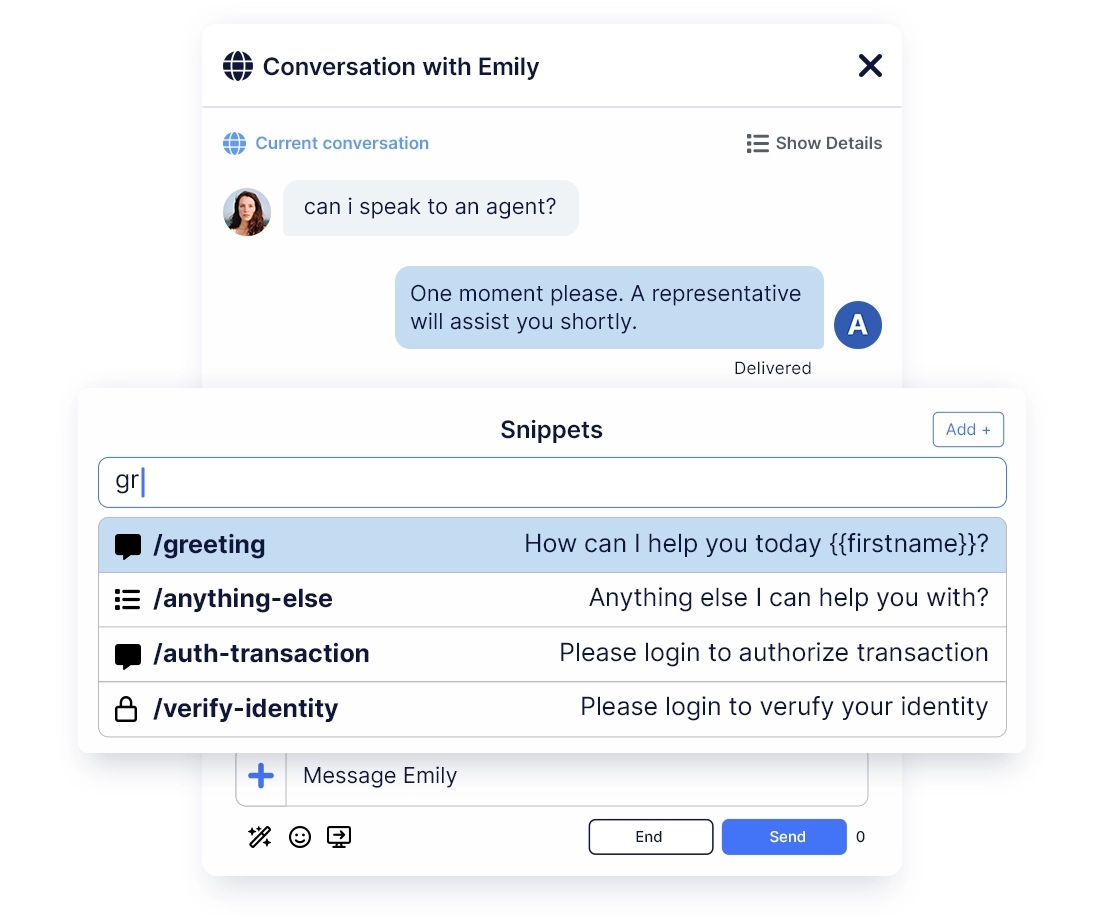
Quiq Translations
With Quiq Translations, your agents can respond to customers in their native tongues without needing to be fluent. We support all left-to-right and right-to-left languages. Learn more.

Even the most complex workflows just work.
Quiq streamlines intricate workflows with enterprise-grade agentic AI and automation. Prioritize high-value customers, escalate issues easily, or direct conversations to the right agent or AI—all with configurable workflows built for efficiency.
Queries go to the right agent the first time, increasing speed and accuracy.
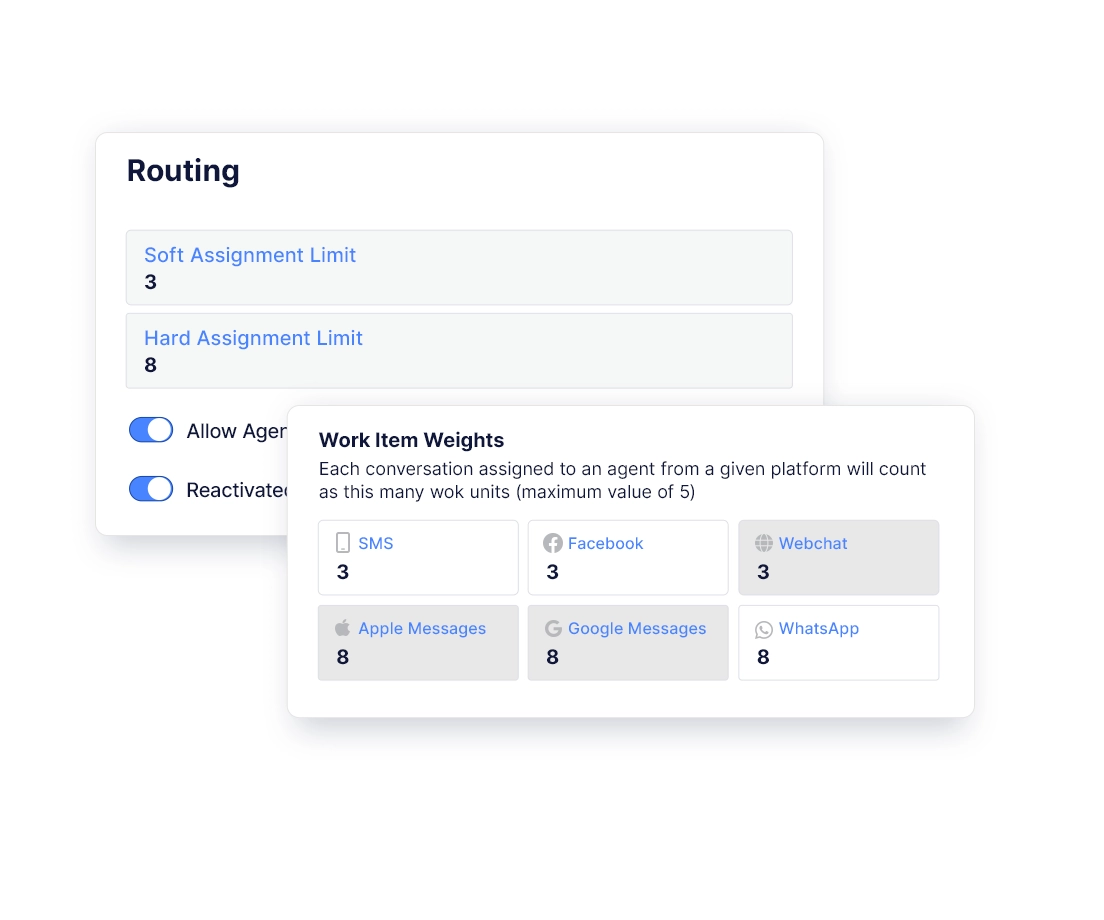
Reduce customer wait times by dynamically balancing workloads.
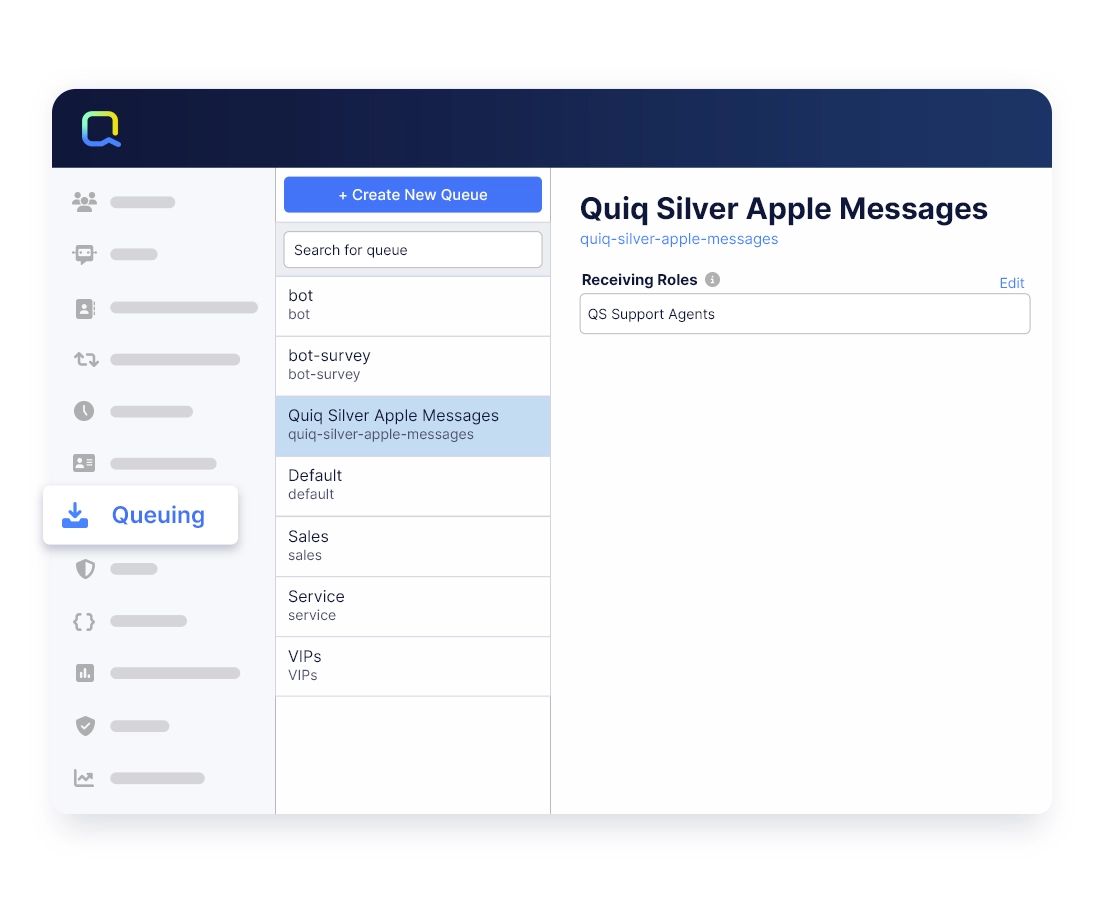
Automate personalized experiences with granular, configurable rules.
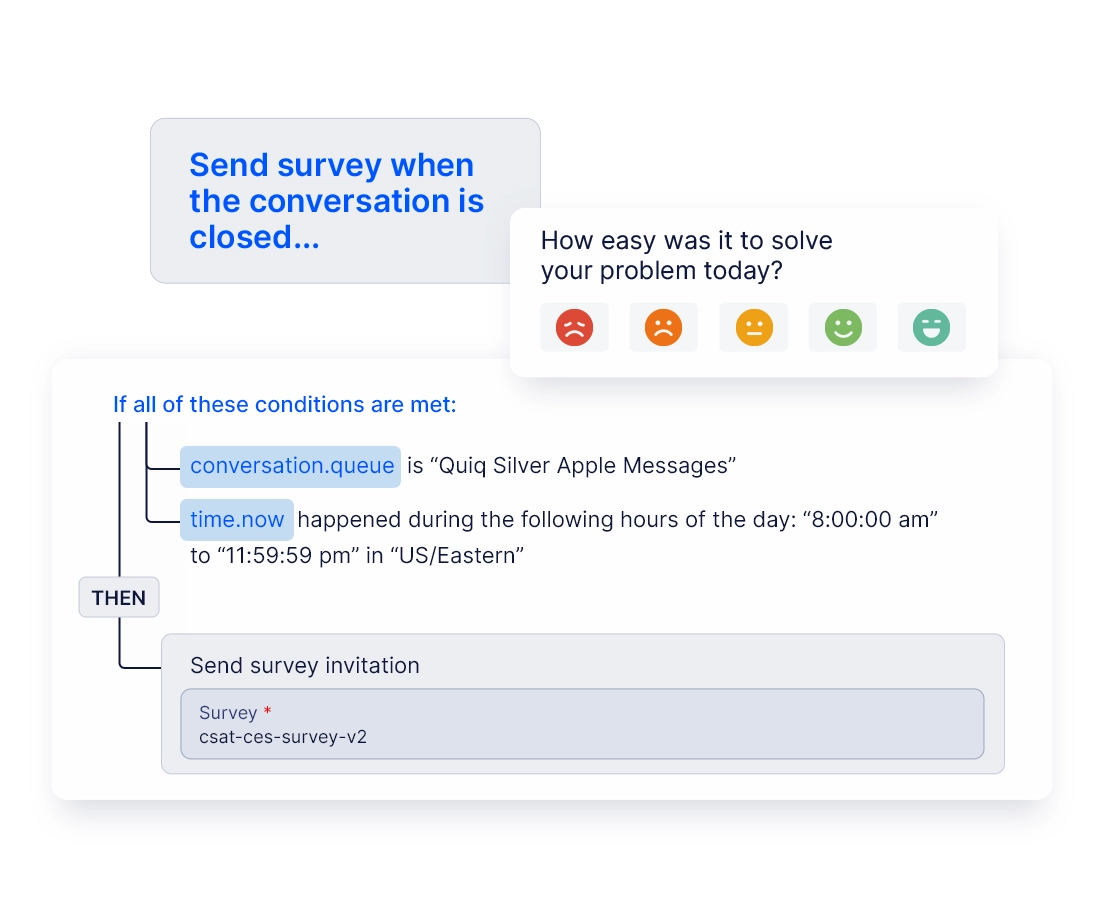
Move callers who don’t want to wait on hold into asynchronous messaging instead. Learn more.
Dynamically customize the experience for your human agent, from the information they see to the AI assistant they use – all based on the conversation context. Your customers’ issues aren’t one size fits all, so your agents’ workspace shouldn’t be either.















